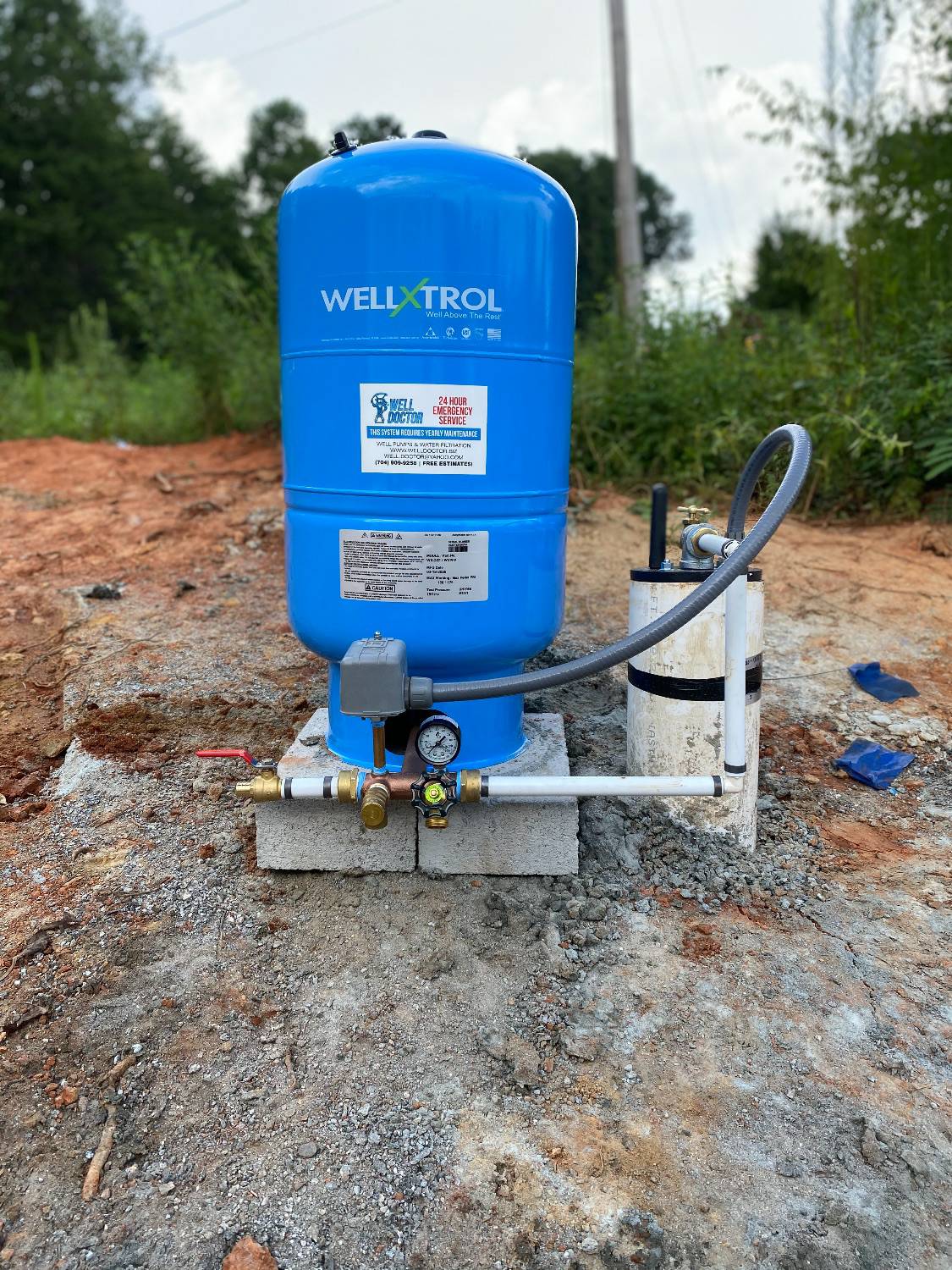A cracked well cover might not seem like a big deal until your water pressure drops, the system starts making strange noises, or the water suddenly smells off. These are often the early warning signs that your well system isn’t just aging, it’s failing. Many homeowners miss them or delay repairs, only to face full system replacements later.
Small problems in the pump, pressure tank, or casing can snowball quickly if left unchecked. By the time you notice cloudy water or frequent cycling, you might already be past the point of easy fixes. Catching these signs early can save you from bigger headaches (and bills) down the line.
What are the common signs that indicate a well system needs total replacement?
A well system is crucial for providing clean, reliable water—but like any mechanical system, it can wear down over time. While some issues can be resolved with simple repairs, others may necessitate a total system replacement. Here are the most common warning signs:
- Frequent Water Pressure Drops: Sudden or recurring drops in water pressure may indicate pump failure, clogged pipes, or deteriorating components within the system.
- Visible Cracks or Damage: Cracks in the well cap, casing, or pressure tank can allow debris or bacteria to enter, compromising both performance and water quality.
- Constantly Running Pump: A pump that runs continuously or short-cycles frequently may be failing or working harder than it should due to internal damage or water level issues.
- Sediment or Rust in Water: Dirty or discolored water often signals pipe corrosion, casing cracks, or screen failure—common problems in aging systems.
- Unusual Noises: Grinding, whining, or banging sounds coming from the pump or pressure tank may point to severe mechanical wear.
- Increased Repair Frequency: If you’re calling for service more often, your system may be costing more to patch than it would to replace.
Recognizing these signs early can help prevent water outages, contamination, and unexpected costs.
How do cracked covers affect the overall condition of a well system?
Cracked well covers may seem like a minor issue, but they can have serious consequences for the overall condition of your well system. The well cover acts as a protective barrier, keeping contaminants, debris, and pests out of your water supply. When it’s compromised, the entire system is at risk. Here’s how cracked covers can negatively impact your well.
- Contamination Risk: A cracked cover allows dirt, bacteria, insects, and even small animals to enter the well, potentially leading to waterborne illnesses and poor water quality.
- Moisture Intrusion: Rainwater and runoff can seep into the well through cracks, introducing harmful chemicals, pesticides, or fertilizers from surrounding soil.
- Increased Sediment Buildup: Without a proper seal, debris can fall into the well, clog screens, damage pumps, and reduce efficiency.
- Corrosion Acceleration: Moisture and foreign materials entering through a damaged cover can increase internal corrosion, shortening the lifespan of key components.
- Mechanical Strain: Debris and contaminants can force the pump to work harder, leading to premature wear and potential system failure.
Addressing a cracked cover promptly can help protect your water supply and prevent costly repairs or the need for a total system replacement in the future.
When should homeowners consider replacing their entire well system?
Homeowners should consider replacing their entire well system when repairs become frequent, water quality declines, or key components show signs of irreversible damage. While routine maintenance can keep a well-functioning system for years, there comes a point when replacement is more cost-effective and reliable. Here are the key indicators:
- Repeated System Failures: If you’re calling for well repairs multiple times a year, it may be a sign that the system is beyond patching and full replacement is more practical.
- Significant Drop in Water Quality: Persistent issues, such as foul odors, discoloration, sediment, or bacterial contamination, indicate internal damage or casing deterioration that may be irreparable.
- Constant Pressure Problems: Low or fluctuating water pressure, even after servicing the pump or tank, can indicate deep-seated system wear or failure.
- Aging Components: Well pumps typically last 10–15 years, while pressure tanks may last around 15–20 years. If both are nearing the end of their lifespan, replacing the full system might be more efficient.
- Visible Structural Damage: Cracks in the casing, collapsed screens, or broken well caps that lead to contamination may require a full system overhaul.
Replacing the entire system ensures long-term reliability, better water quality, and fewer unexpected repair costs.
What are the risks of ignoring early signs of well system deterioration?
Ignoring early signs of well system deterioration can lead to serious consequences for both your home and health. What starts as a minor issue—like a cracked well cap or a small pressure fluctuation—can quickly escalate into costly damage and unsafe water. Here are the primary risks of delaying action:
- Water Contamination: Cracks or corrosion in the well system can allow bacteria, nitrates, pesticides, or other harmful substances to enter your water supply, posing significant health risks.
- Total System Failure: Minor pump or pressure tank issues can develop into full mechanical breakdowns, leaving you without water entirely and requiring emergency replacement.
- Expensive Emergency Repairs: Neglected issues often result in urgent, unplanned repairs that are far more costly than routine maintenance or early intervention.
- Increased Energy Bills: A failing pump works harder to maintain pressure, consuming more electricity and increasing your utility costs over time.
- Permanent Well Damage: Sediment buildup, internal corrosion, or intruding roots can cause irreversible damage to the well casing or screen if left unchecked.
- Decreased Property Value: A poorly maintained or failing well system can negatively impact resale value and raise concerns during home inspections.
Addressing early warning signs protects your investment, health, and peace of mind.
Don’t Ignore These Early Warning Signs for Wells
At Well Doctor LLC, we’ve seen how small issues can quickly spiral into full system failures if left unchecked. A cracked cover or drop in water pressure may seem minor, but these are often early signs of a much larger problem.
Ignoring them can lead to water contamination, system breakdowns, and expensive emergency repairs. Our experienced team is here to identify warning signs early and provide honest, effective solutions—whether it’s a simple repair or a complete system replacement.
Don’t wait for a complete failure. Trust Well Doctor LLC to protect your water supply and restore your peace of mind.

